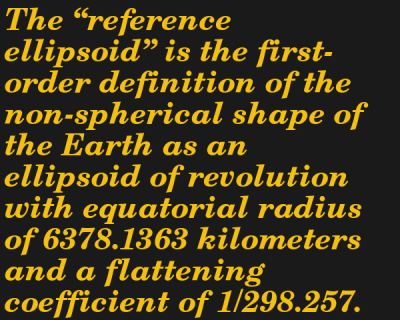Each summer you move down the shore, but lately you’ve begun to notice that the shore seems narrower each time you visit. Is that the sea level rising, or is your sand simply being swept off? Talking of sea levels, you keep hearing that they grow higher annually — but just how is that measured? In the end you can’t precisely use a ruler. As it happens there are a range of smart systems in place that could accurately measure the worldwide sea level down to less than an inch and a half.
Not only are waves constantly rippling throughout the ocean’therefore surface, but tides periodically roll in and out, making any instantaneous measurement of sea level hopelessly inaccurate. Even in the event your aim is to take hundreds or even thousands of dimensions over the course of months or weeks, taking the individual dimensions is still difficult. Decide on a nice, steady stone in the surf, mark a line on itand go every hour for two weeks to maintain a tape measure to it. In the top you’ll get over half an hour on each reading, no matter what you’ll get moist, and in worst that the stone will proceed and you also ’ll buy a moist notebook full of useless numbers. So let’s take a look at how the experts do it.
Expensive Rulers
As it turns out, measuring sea level using a ruler isn’t that far off — but professional oceanographers have very pleasant ones known as tide gauges, that reside in aptly-named tide houses. The easiest tide gauge is a very long tube sitting at the water, anchored in position. The tube includes small openings beneath the water level that permit water to leak in and out. Also referred to as a stilling well, this device averages out small movements and waves, enabling a far more serene and accurate measurement from a series of graduations inside the tube.
 An old-fashioned tide house, courtesy of NOAA
An old-fashioned tide house, courtesy of NOAA
Of course, manually creating all these dimensions is dull work, and now there are computerized techniques for documenting tide levels. Nevertheless, some tide houses had automated recording systems as early as 1830. These systems comprised of a float at the stilling well, which transferred a “pen” by way of rope and pulley. Each six seconds, the pencil would mark the tide level on paper, so much in the way an old seismometer works.
Through the years, the stilling well has evolved into the flying tube — rather than a float onto a rope, and the sounding tube sends a sound pulse down the tubing and measures the time it takes for the pulse to bounce off the water surface and then return to a detector. Recently, NOAA has developed a new system which uses microwave radar to gauge the water level. Microwave detectors don’t require a stilling well- they may be mounted to a structure that sits over the water. That is a large advantage, since servicing the detector is a lot simpler in case you don’t must don a wetsuit and air tank. In the coming years, NOAA is planning to transition it’s acoustic measurement stations to this brand new microwave technology.
Therefore, if you’re able to measure sea level without ever touching the water, by how far off can you measure, exactly?
Send In The Satellites
As it turns out, you can take measurements from pretty far away — about 830 miles off, to be exact.
In 1992an Ariane 4 rocket hurdled upward in the Guiana Space Center to deliver the most TOPEX/Poseidon satellite into orbit. The satellite carried out an impressive selection of devices such as two radar altimeters, a microwave radiometer, GPS receivers, along with also a laser retroreflector array. The GPS system managed to pinpoint the satellite’s place to within a inchand was the first system to demonstrate that GPS satellites might be utilized to find another spacecraft rather than only terrestrial targets.
The TOPEX/Poseidon system was revolutionary for a number of factors. Not only was it able to measure sea level to an incredible amount of accuracy (1.5 inches), but it was the first assignment to map the earth’s tides. It mapped currents throughout the ocean, and gathered valuable information that enhanced our comprehension of climate change, climate, as well as the Earth’s gravitational field.
Even though the satellite was shut down in 2006 after earnest, its mission was carried over by Jason-1, that was launched in 2001 to supplement TOPEX/Poseidon’s dimensions. Jason-2 followed, and in 2016 the group was taken up by Jason-3.
We know that these satellites do a terrific job of measuring the sea degree, but just what are they measuring it against?
So Is Sea Level Zero?
 Well yes… and no. It depends on your reference point. When you look on any topographical map, you’ll see that elevations are recorded in elevation over (or occasionally, below) sea level. Pilots frequently report altitudes at AMSL, or Above Mean Sea Level. Mean sea level is accessed by time-averaging the still water level (SWL) to get rid of untoward impact of daily tides. SWL is what could be quantified with a tide gaugethe water level along with sea moves like wind waves . This works well enough for measuring the elevation of items that aren’t, well, the ocean, but we run into a problem if we try to gauge the ocean in terms of itself. This is where we want other references to measure against.
Well yes… and no. It depends on your reference point. When you look on any topographical map, you’ll see that elevations are recorded in elevation over (or occasionally, below) sea level. Pilots frequently report altitudes at AMSL, or Above Mean Sea Level. Mean sea level is accessed by time-averaging the still water level (SWL) to get rid of untoward impact of daily tides. SWL is what could be quantified with a tide gaugethe water level along with sea moves like wind waves . This works well enough for measuring the elevation of items that aren’t, well, the ocean, but we run into a problem if we try to gauge the ocean in terms of itself. This is where we want other references to measure against.
The satellite-based instruments report sea level with respect to the WGS-84 Reference Ellipsoid, defined by the TOPEX/Poseidon Data User’s Handbook as the “that the first-order definition of this non-spherical shape of the Earth as an ellipsoid. ” This is likewise the baseline GPS receivers use to convey elevation information. Another useful reference surface is that the geoid — the theoretical shape that the Earth’s ocean would make if it were free in the outside impacts of the Sun and other celestial bodies, just acted upon by the gravity and rotation of the Earth itself.
Does Mars Have a “Sea Level”?
That is all well and good for Earth using it’s vast oceans, however how is elevation measured on Mars (or other planets, for that matter) in which there’s not any sea to reference?
If you would like to measure a mountain on Mars, you better bring a barometer and a calculator. Zero elevation is defined as the isobar in which the atmospheric pressure is equivalent to 610.5 Pa (for reference, “sea amount ” on earth has an atmospheric pressure of 101.5 kPa). Though apparently chosen randomly, 610.5 Pa is that the triple point of water on the red world — which is, the stress at which water could exist in its liquid, solid, and gaseous conditions simultaneously. From this, along with also a reference ellipsoid very similar to this one we use for the Earth, the elevation of various geographical characteristics is quantified by laser altimeters affixed to a satellite satellite like the Mars Global Surveyor.
Let’s take a peek at the Moon today, in which the “atmospheric” stress is effectively zero (ok, there’s a few gas there but that the strain is about Pa). The Mars strategy won’t work here, because there’s no atmosphere to speak of. To set that the Moon’s reference ellipsoid, scientists decided its typical diameter and set that as the zero. The Lunar Reconnaissance Orbiter then could measure the relative elevation of the lunar surface with regard to this datum.
Back To The Beach
Thus, back to our initial quandary — what precisely is causing this receding shore you see year after year? Typically, the global sea level rises annually by about 0.14 inches, therefore while global warming is a very real concern you probably aren’t discovering its effects on the shoreline annually to the next. That leaves coastal erosion — the slow removal of sand, dirt, stones, and dirt by the ocean. It’s also a good thing then, if much of the coastline is so shaky, that we have tide houses and satellites to accurately monitor changes in the international sea level. That stone you attempted to measure against is all but guaranteed to proceed.
Article Source and Credit hackaday.com https://hackaday.com/2021/03/08/sea-level-how-do-we-measure-global-ocean-levels-and-do-rising-oceans-change-that-benchmark/ Buy Tickets for every event – Sports, Concerts, Festivals and more buytickets.com






